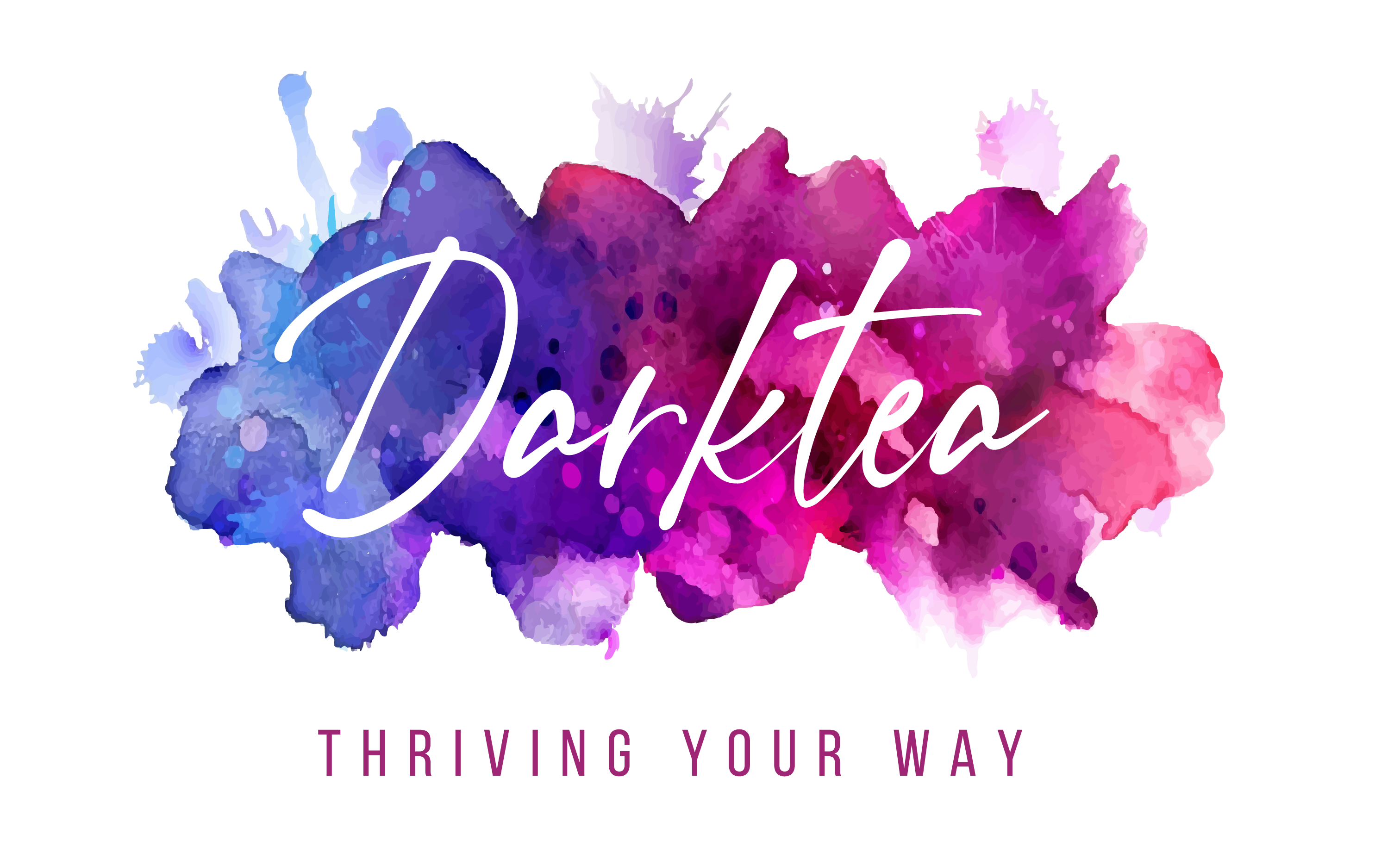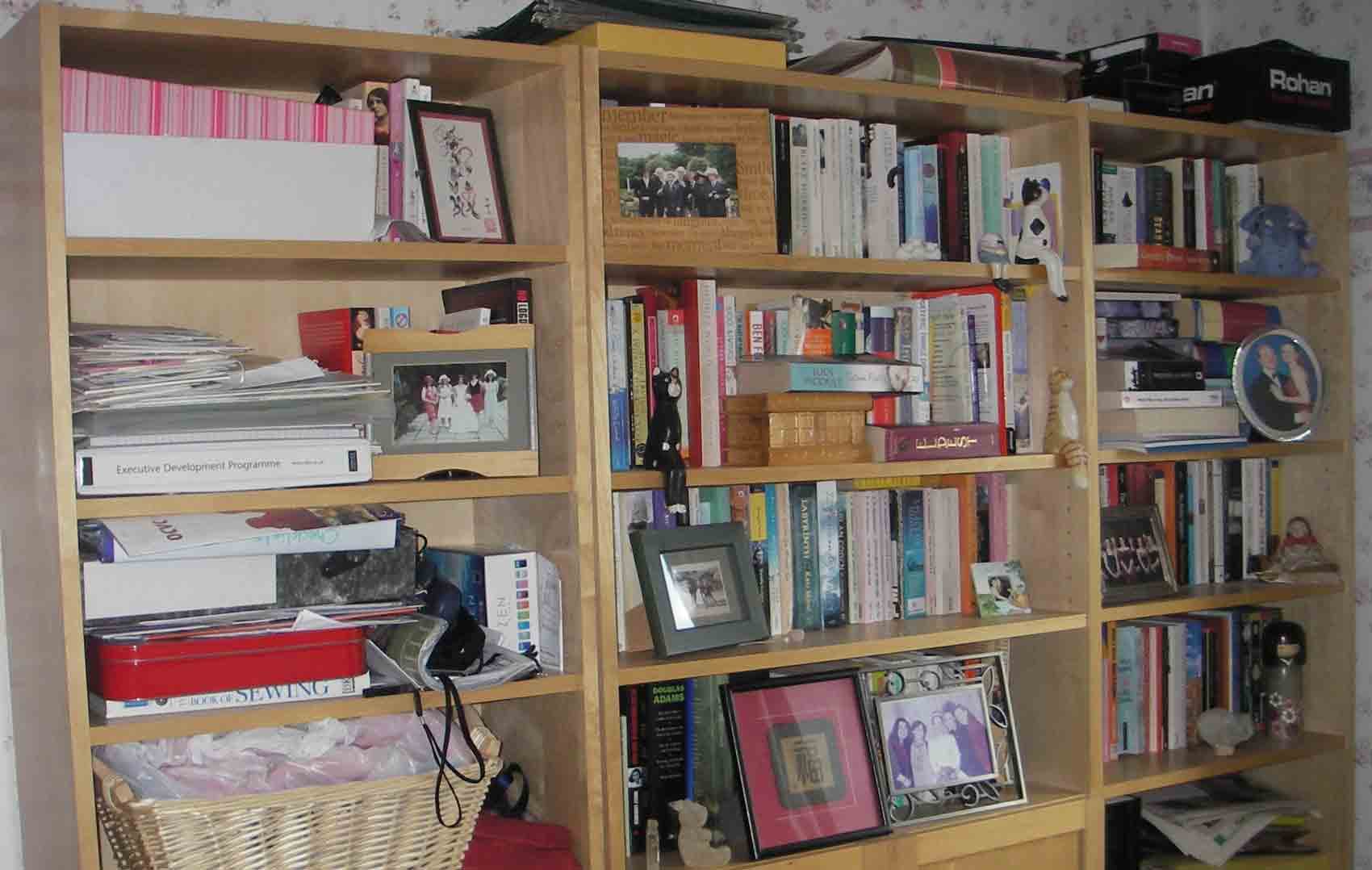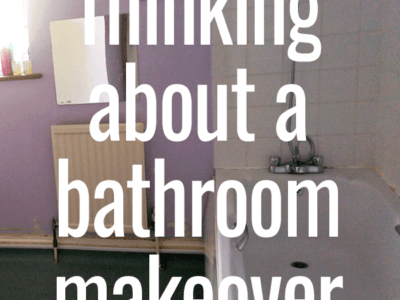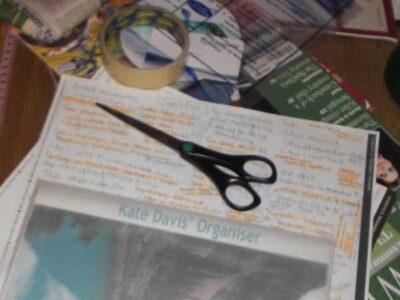
Split fiction and non fiction
I think it is easier to start by splitting the books into two categories fiction and non fiction. I don’t take the term fiction too literally though and use it describe the books I use as escapism, for instance it includes biographies and some history books.
Look around the house and identify how you use books
For instance, anywhere you find a pile of books it is likely that you use books in that location, so you should consider whether it would be helpful to store some books there; there is no rule that books need to be kept in a ‘library’ in one location. What do you do with books after reading them? Do you like to keep them or move them on to other people? This will dictate how much space you need for your bookshelves.
I mainly read in two locations my study and in the bedroom, but all my book piles form in the study. The key feature I want in my system is to easily identify my favourite books and those that I still want to read so I can go to the correct shelf for the mood I’m in. As I’m a bookcrosser and use bookmooch I also have several books that I no longer want and I don’t want these to merge back into my books to keep.
Consider how you look for books
When you go to your shelves how do you look for books? If you look for a particular bookm you want to be able to find it quickly, so organisation by author or genre maybe appropriate. However, if you like to browse until you find a book that takes you fancy a more ‘random’ approach may be suitable as it will mix the books up, such as by colour, book height, alphabetically by title or published date.
Of course there is no reason why you can’t combine more than one of these approaches.
I have chosen different organisation methods for my to be read (tbr) and my favourite books. My tbrs are sorted by author and my favourites are done by colour, because when I want a comfortable read I often don’t know what I want to read so will browse my shelves until something takes my fancy.
Collect the books for each category together
Collect the books together in each category so it is clear how many books there are. This enables you to guestimate how much room will be required.
Keep books where you use them
This may seem an obvious suggestion, but books are only useful when you actually use them. In the past I have fallen into the trap of keeping all my books in my study, but now I have recipe books in the kitchen and computer books near my computer, it means they are to hand when I think about them so I am more likely to use them. This may require you to be a bit more creative on when you place the books if you don’t have any shelves at the point of use. Could you use a cupboard or a box?
Once you know where you are going to keep the books, you can then compare the available space to the required space shown by the pile created in the previous step. If you have too many books for the space you need to think about moving some of the books on to other people.
Clear all books off the shelves and clean the shelves
It is possible to organise books by shuffling the books around the shelves, but it is much easier and rewarding to start with clear and clean shelves. It keeps the books in better condition and also ensures you consider each book individually enabling you the opportunity to rediscover books you love or that you didn’t know you owned.
Sort books into groups
This is when the fun begins as you actually start to sort through the books. If you are organising the books alphabetically by author you would start by pulling out the authors beginning with A (such as Jane Austen and Douglas Adams) and then B until you’ve gone through the alphabet. If you were doing it by colour you would start with by collecting the books of one colour spine together e.g. black and then white.
I enjoy this phase because I actually get to look at the books and frequently it remind me of the time I read the books (for instance I read a lot of Bridget Jones’s Diary in the kitchen of my house in the second year of university and One Hundred Years of Solitude on the beach at Studland, Dorset). It also reminds me of books that I am interested to read but I forgot about them.
The key at this point is not to start putting the books on the shelves yet, because you usually find you have missed grouping several books that needs to be fitted at the start of your system.
Put the books on the shelf, but before doing so consider if you are actually going to read them
It can be difficult to throw away books, however the cost of paperbacks is very reasonable and I think the cost of the shelf space is more important than the cost of rebuying a book if I decide I did actually want to read it. So, as I’m about to place books on the shelf I think about whether I expect to read it in the next two years and if not I put it in the to-go box. This has several benefits for instance it reduces the storage requirement, it increases the percentage of books you want to read so it is easier to find a book and it enables new books to come on to your shelves.
I find the last point interesting because I have reduced the number of books I have bought over the last two years as there are so many tbrs on my shelves. However, I bought many of them while I was as university and my tastes have changed since then. So I’ve been limiting my reading pleasure because of some books that I don’t really want to read.
As you place the books on the shelves it is always good to leave spaces through out the books to provide space for future growth. If this is not possible then you may have to restrict yourself to a one in one out policy to prevent the build up of overflowing shelves.
Move on the books you don’t want
Now that you have a pile of books you no longer want it is important to move them on to other people who do want to read them. There are several ways of doing this; my favourites are bookcrossing and bookmooch , but you may also like to sell them on ebay or amazon (there is even a book on how to make money doing this ) or give them to a charity shop
Decide if you want to keep a log of the books
Now that you have your books organised you may want to make a log of them. You could do this through a Word document or an Excel spreadsheet, or you could go digital and use a site like Librarything where you can easily import the details of books from Amazon . You can find me on Librarything, which I use mostly to keep a list of the books I want to read.

So, my shelves now look like this, the main problem I have is some of my shelves are not tall enough to fit all my books so some of them need to go on their sides. I have also registered an additional 23 books available on Bookmooch.
—–
Further information:
Websites
Books
At Home with Books: How Booklovers Live with and Care for Their Libraries
Decorating with Books (House Beautiful)









